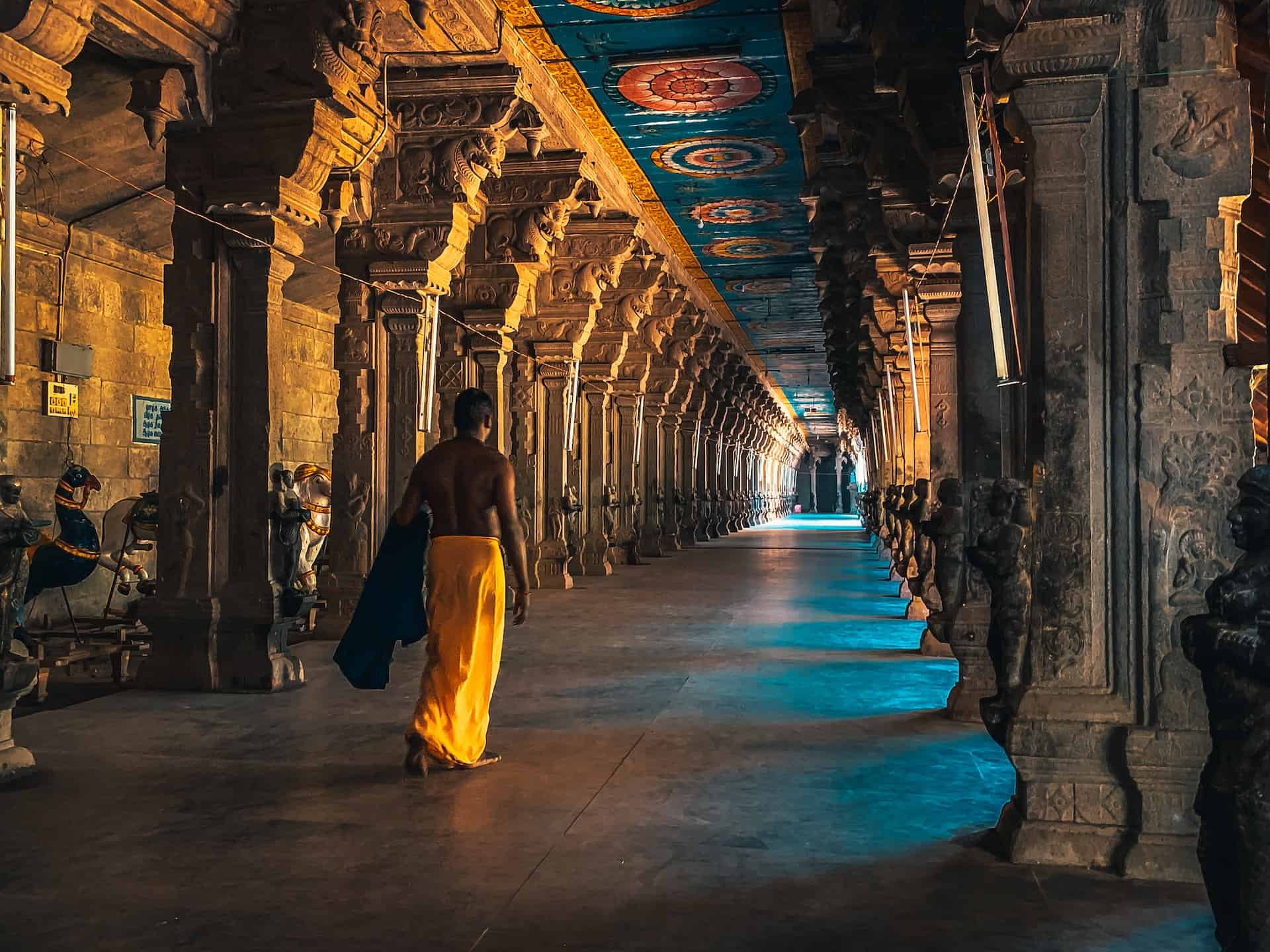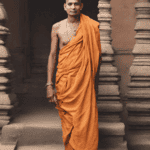Hinduism, one of the world’s oldest religions, is a tapestry of diverse beliefs, practices, and philosophies. As we delve into its rich history, we embark on a journey that takes us back thousands of years, when the origins of Hinduism emerge from the depths of ancient India. Exploring its multifaceted nature and the amalgamation of various cultural and spiritual traditions, we aim to understand how far back its history truly extends.
The Indus Valley Civilization: The Cradle of Hinduism
The Indus Valley Civilization, also known as the Harappan Civilization, flourished around the Indus River basin in present-day Pakistan and northwestern India from approximately 3300 BCE to 1300 BCE. It is considered one of the earliest urban civilizations in the world, with well-planned cities, advanced infrastructure, and remarkable achievements in art, trade, and technology. The civilization’s significant contributions to the cultural and religious heritage of the region make it often referred to as the cradle of Hinduism.
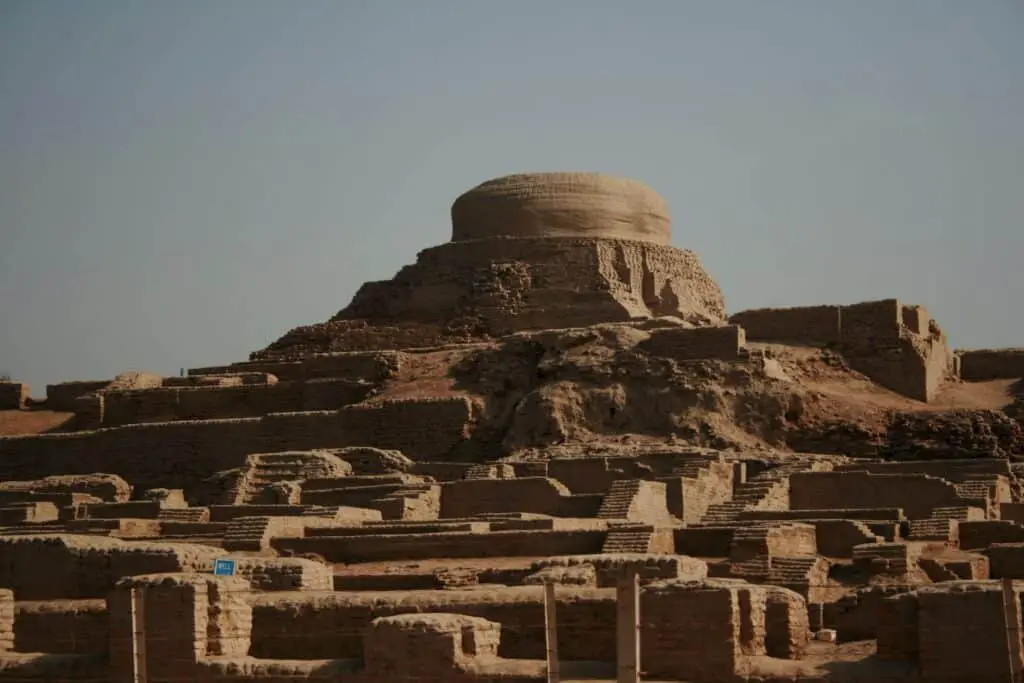
Cultural Significance
The Indus Valley Civilization had a profound impact on the development of Hinduism, which is one of the oldest living religions in the world. Many scholars believe that elements of the civilization’s culture, practices, and belief systems laid the foundation for the emergence of Hinduism as a major religious tradition. While it is challenging to directly trace the continuity between the Indus Valley Civilization and modern Hinduism, there are notable cultural and religious aspects that indicate a connection.
Urban Planning and Religion
The cities of the Indus Valley Civilization, such as Mohenjo-daro and Harappa, displayed an extraordinary level of urban planning, with well-organized streets, drainage systems, and sophisticated architecture. The layout of these cities often included a central citadel or mound, which is believed to have served as a religious or administrative center. The presence of such structures suggests a close link between urban life, governance, and religious practices in the civilization.
Iconography and Symbols
The art and iconography of the Indus Valley Civilization provide important insights into the religious beliefs and practices of the time. Various artifacts discovered at the archaeological sites feature images of animals, deities, and ritualistic scenes. Some of these motifs and symbols, such as the “Pashupati seal,” depicting a seated figure surrounded by animals, have been interpreted as early representations of Hindu deities or proto-Shiva iconography. These representations point toward the possible origins of certain Hindu religious symbols and iconography in the civilization.
Sacred Rituals and Worship
The presence of public baths, wells, and large open courtyards in the Indus Valley cities suggests that communal bathing and ritualistic purification were an integral part of their religious practices. The discovery of fire altars and sacrificial pits further indicates the performance of rituals, which may have involved offerings, prayers, and other forms of worship. These communal and ritualistic practices find parallels in later Hindu traditions and rituals.
Worship of Female Deities
Another notable aspect of the Indus Valley Civilization is the presence of female figurines and representations, often referred to as the “Mother Goddess” or “Fertility Goddess.” These female deities, depicted with exaggerated features associated with fertility and abundance, indicate the importance of feminine principles in the religious and cultural life of the civilization. This reverence for the divine feminine can be seen as a precursor to the worship of goddesses in Hinduism, such as Devi, Durga, and Kali.
Continuity and Transformation
It is important to note that the transition from the Indus Valley Civilization to the Vedic period and the development of Hinduism involved a complex process of cultural synthesis, migration, and assimilation. The arrival of Indo-Aryan tribes and their integration with the indigenous population resulted in a blending of beliefs, rituals, and practices. Over time, the religious traditions of the region evolved, incorporating elements from the Indus Valley Civilization and the Vedic traditions, leading to the emergence of what we recognize today as Hinduism.
Vedic Period: The Dawn of Hindu Scriptures
The Vedic Period is a significant era in the history of India, spanning from around 1500 BCE to 500 BCE. It is named after the Vedas, a collection of ancient religious texts that form the foundation of Hindu scriptures. The Vedic Period marks the dawn of these scriptures and the emergence of early Hindu religious and philosophical traditions.

Composition of the Vedas
The Vedas are a collection of hymns, prayers, rituals, and philosophical teachings composed by sages known as rishis. These texts were initially transmitted orally from generation to generation before being compiled into written form during the Vedic Period. The Rigveda, the oldest and most important of the four Vedas, contains hymns dedicated to various deities and natural forces. The other three Vedas are the Samaveda, the Yajurveda, and the Atharvaveda, each with its unique focus and purpose.
Religious and Ritualistic Practices
The Vedas played a central role in shaping religious and ritualistic practices during the Vedic Period. Sacrificial rituals known as yajnas were performed by priests called Brahmins according to the instructions outlined in the texts. These rituals involved the offering of prayers, hymns, and oblations to various deities, seeking their blessings and favor. The Vedic rituals were highly complex and precise, with detailed instructions on the construction of altars, recitation of mantras, and performance of specific actions.
Concept of Deities
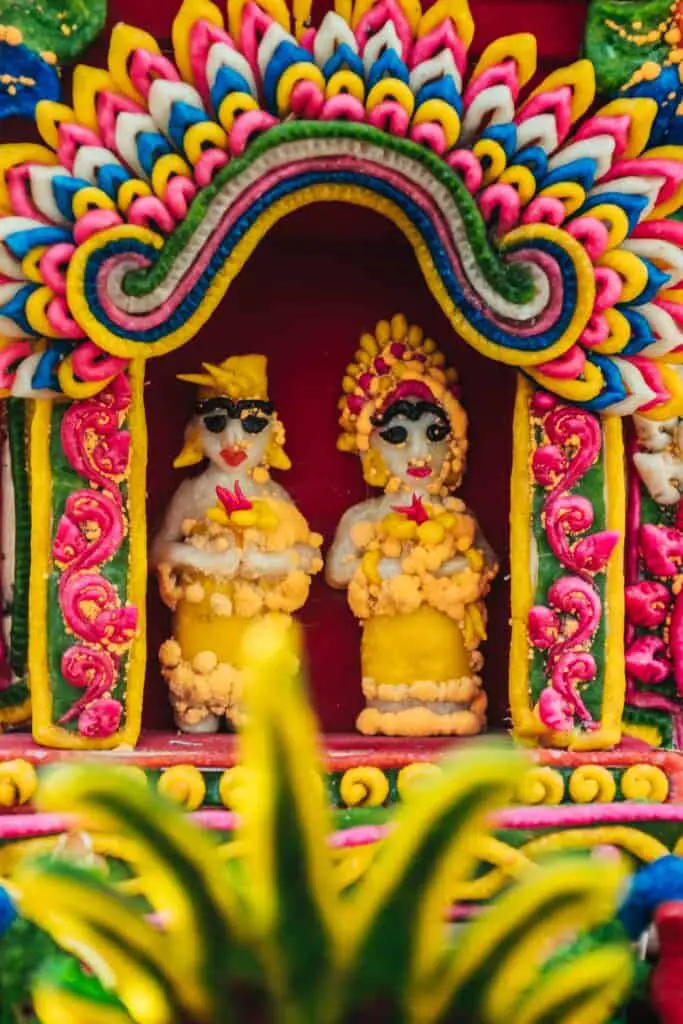
The Vedic texts depict a pantheon of deities, referred to as devas, who were worshipped and revered during the Vedic Period. Indra, Agni, Varuna, Soma, and Rudra are among the prominent deities mentioned in the Rigveda. Each deity represented different aspects of nature, cosmic forces, or abstract concepts. They were often associated with specific powers and functions, and the Vedic hymns praised and invoked them for various blessings, such as rain, victory in battles, and general well-being.
Philosophical Ideas and Concepts
The Vedic Period also witnessed the emergence of philosophical ideas and concepts that laid the foundation for later Hindu philosophical systems. The Upanishads, which are philosophical treatises appended to the end of the Vedic texts, explored profound questions about the nature of reality, the self, and the ultimate truth (Brahman). Concepts such as karma (law of cause and effect), dharma (duty and righteousness), and moksha (liberation from the cycle of birth and death) began to take shape during this period and became key principles in Hindu philosophy.
Social Structure and Class Divisions
The Vedic society was organized into a hierarchical structure known as the varna system, which laid the groundwork for the caste system in later centuries. According to the Rigveda, society was divided into four main varnas: Brahmins (priests and scholars), Kshatriyas (warriors and rulers), Vaishyas (merchants and farmers), and Shudras (laborers and servants). This division was initially based on one’s occupation and skills but later became hereditary, leading to a rigid social order that influenced Indian society for centuries to come.
Oral Tradition and Preservation
During the Vedic Period, the transmission of knowledge and scriptures relied heavily on oral tradition. The Vedic texts were memorized and recited by successive generations of priests to ensure their accuracy and preservation. The strict adherence to pronunciation, intonation, and meter was crucial in maintaining the integrity of the texts. This oral tradition persisted until the development of writing systems in subsequent centuries.
The Upanishads and Philosophical Developments
The Upanishads are a collection of ancient philosophical texts that are considered a central part of Hindu scriptures. They were composed between 800 BCE and 200 BCE, during a period of intellectual and philosophical exploration in ancient India. The Upanishads represent a shift from the ritualistic and sacrificial focus of the earlier Vedic texts to a more introspective and philosophical inquiry into the nature of reality, the self, and the ultimate truth.
Nature and Content of the Upanishads
The Upanishads explore profound metaphysical and philosophical concepts through dialogues, conversations, and discourses between sages, teachers, and students. They delve into topics such as the nature of the self (Atman), the nature of the ultimate reality (Brahman), the relationship between the individual and the universal, and the nature of existence, consciousness, and liberation (moksha).
Concepts of Atman and Brahman
One of the central teachings of the Upanishads is the concept of Atman and Brahman. Atman refers to the individual self or soul, while Brahman refers to the ultimate reality, often described as the cosmic or universal consciousness. The Upanishads assert that the individual self (Atman) is not separate from the ultimate reality (Brahman) but rather an intrinsic part of it. Realizing this unity between Atman and Brahman is considered a key aspect of spiritual enlightenment and liberation.
Doctrine of Karma and Reincarnation
The Upanishads also elaborate on the concept of karma, which is the law of cause and effect governing actions and their consequences. They explain that individuals are bound by the cycle of birth and death (samsara) due to their actions and desires, and this cycle continues until one achieves liberation (moksha). The Upanishads introduce the idea of multiple lives and teach that the quality of one’s actions (karma) determines the nature of future births and experiences.
Paths to Liberation
The Upanishads discuss various paths or disciplines (margas) that can lead to liberation (moksha) and the realization of one’s true nature. These paths include Jnana Yoga (the path of knowledge and wisdom), Bhakti Yoga (the path of devotion and love), Karma Yoga (the path of selfless action), and Raja Yoga (the path of meditation and mind control). The Upanishads emphasize that different individuals have different temperaments and can choose the path that resonates with them to attain spiritual liberation.
Ethical and Moral Teachings
While the Upanishads primarily focus on metaphysical and philosophical inquiries, they also contain ethical and moral teachings. They emphasize the importance of virtuous conduct, self-discipline, truthfulness, non-violence, compassion, and the pursuit of knowledge. These teachings provide a framework for leading a righteous and meaningful life in harmony with oneself and others.
Influence on Hindu Philosophy and Beyond
The Upanishads had a profound impact on the development of Hindu philosophy and spirituality. They laid the groundwork for various philosophical schools, including Vedanta, which interprets the Upanishadic teachings as the highest and ultimate knowledge. Vedanta encompasses various sub-schools, such as Advaita (non-dualism), Vishishtadvaita (qualified non-dualism), and Dvaita (dualism). The concepts and ideas found in the Upanishads also influenced other philosophical traditions in India, such as Buddhism and Jainism, and had a lasting impact on the spiritual and intellectual history of the world.
Epics and Puranas: Narrative Traditions
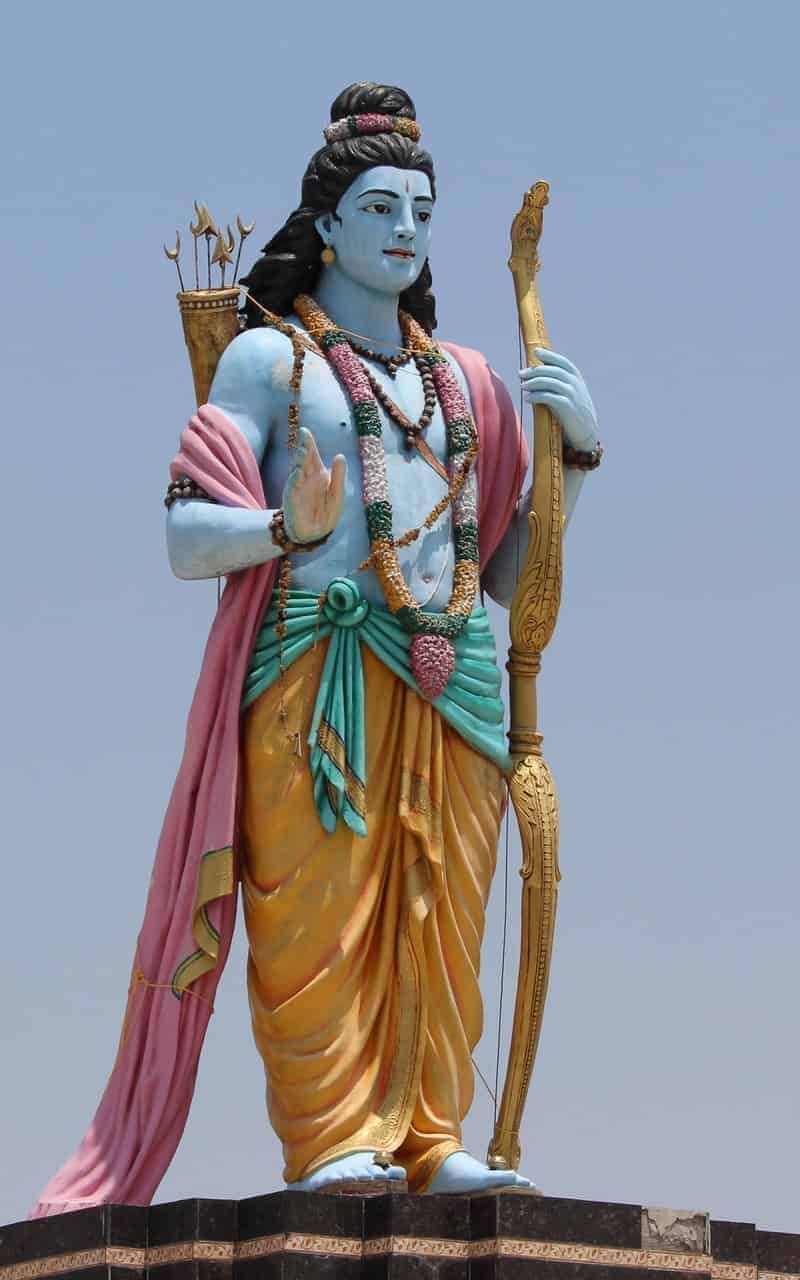
Epics and Puranas are two important categories of narrative traditions in Hinduism. They consist of mythological and historical stories that convey moral, philosophical, and religious teachings. These narratives play a crucial role in shaping Hindu beliefs, values, and cultural practices.
The two most renowned Hindu epics are the Ramayana and the Mahabharata. These epic poems are monumental in scale and contain intricate storylines, heroic characters, and profound philosophical and ethical teachings.
Ramayana
The Ramayana narrates the life and adventures of Lord Rama, an incarnation of Lord Vishnu. It follows his journey to rescue his wife Sita from the demon king Ravana. The epic explores themes of righteousness, devotion, loyalty, and the triumph of good over evil. The character of Rama embodies virtues like dharma (righteousness), sacrifice, and devotion to duty.
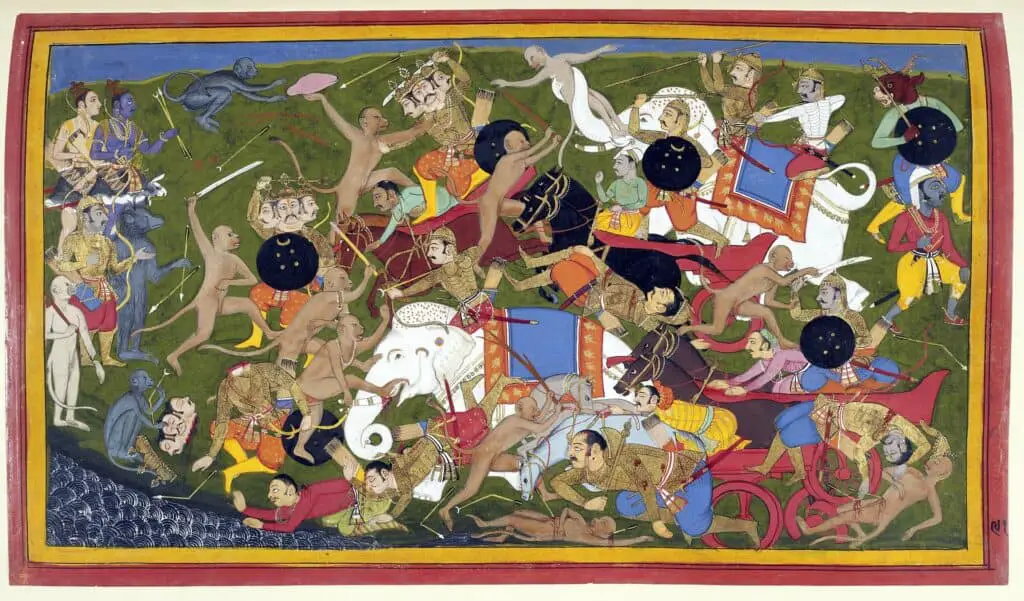
Mahabharata
The Mahabharata is an extensive epic that revolves around the conflict between two families, the Pandavas, and the Kauravas, and culminates in the great Kurukshetra War. It encompasses various subplots, philosophical discourses (such as the Bhagavad Gita), and intricate character development. The Mahabharata delves into complex moral dilemmas, duty, karma, and the human condition. It also contains valuable teachings on leadership, governance, and the pursuit of truth.
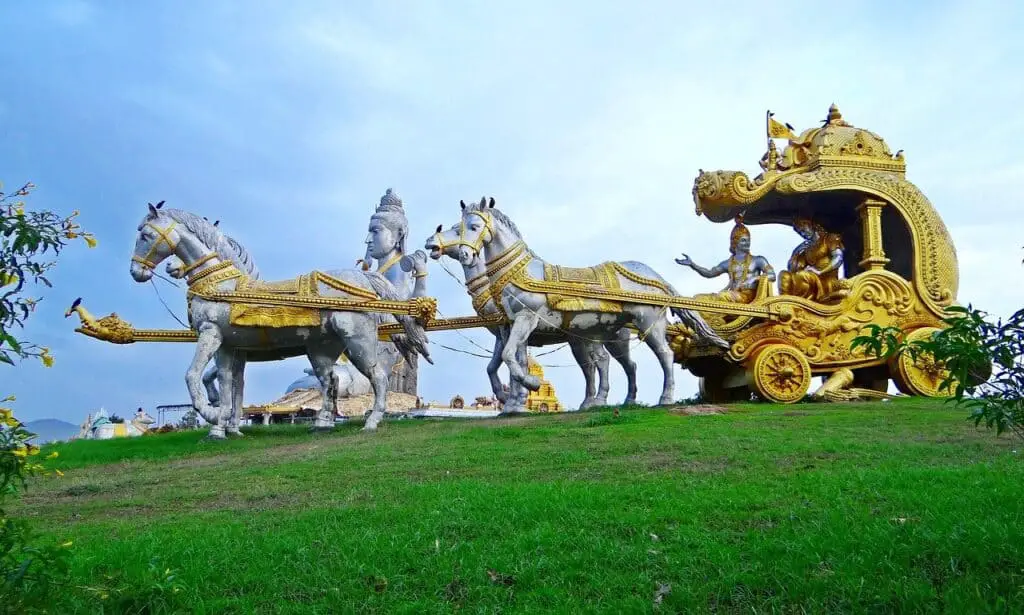
Puranas are a genre of texts that contain a vast collection of myths, legends, genealogies, and cosmological accounts. They provide detailed narratives about gods, goddesses, sages, kings, and historical events. The Puranas serve multiple purposes, including preserving mythology, genealogies, and ritualistic practices. They also convey moral and ethical teachings, and many of them focus on specific deities.
Vishnu Purana
The Vishnu Purana centers around Lord Vishnu and his various incarnations (avatars). It presents cosmological accounts, creation myths, and genealogies of gods, sages, and royal lineages. The text emphasizes devotion to Vishnu and teaches the importance of righteous living.
Shiva Purana
The Shiva Purana extols the greatness of Lord Shiva, his manifestations, and his divine play. It includes stories of Shiva’s marriage, his family, and his role in the destruction and regeneration of the universe. The Purana also provides guidance on yoga, meditation, and spiritual practices associated with Shiva worship.
Devi Bhagavata Purana
This Purana celebrates the divine feminine principle, focusing on the goddess Devi in her various forms such as Durga, Kali, and Lakshmi. It emphasizes the power, grace, and compassion of the goddess and narrates stories of her victories over demons and her role in cosmic creation.
Teachings and Significance
Epics and Puranas serve as repositories of cultural, moral, and spiritual knowledge in Hinduism. They convey complex philosophical concepts and teachings through engaging narratives, making them accessible to people of different backgrounds and levels of understanding. The narratives provide moral lessons, illustrate the consequences of actions, and offer guidance on leading a righteous and purposeful life. They also inspire devotion and provide a connection to the divine, serving as a source of inspiration, cultural identity, and religious practices for millions of Hindus.
Influence on Arts and Literature
The epics and Puranas have had a profound impact on various art forms and literature in India. They have inspired poetry, music, dance, theater, painting, sculpture, and other artistic expressions. The characters, stories, and themes from the epics and Puranas continue to be a rich source of inspiration for artists, writers, and performers across generations.
Diversity and Syncretism: Influences from Across the Ages
Hinduism’s history is not confined to a linear progression but rather a dynamic interplay of diverse influences. Over the centuries, interactions with other religions and cultures, such as Buddhism, Jainism, Islam, and Christianity, have contributed to the evolution of Hinduism. This syncretism allowed for the assimilation of new ideas, practices, and rituals, further enriching the tapestry of this ancient faith.
The Elusive Beginning: The Complexity of Hindu Origins
Attempting to pinpoint an exact starting point for Hinduism is a challenging task due to its organic and gradual development over millennia. Unlike other major religions, Hinduism does not trace its origins to a single founder or a specific moment. Instead, it embraces a vast array of traditions, customs, and beliefs that have evolved and intertwined through the ebb and flow of history.
Conclusion
The origin of Hinduism is deeply intertwined with the ancient civilizations of the Indus Valley and the subsequent Vedic period. Its rich history spans thousands of years, encompassing the composition of the Vedas, the emergence of philosophical treatises like the Upanishads, and the evolution of epic narratives and puranic traditions. Hinduism’s tapestry is a testament to its ability to adapt, synthesize, and absorb diverse influences, making it a living and dynamic religion.
Exploring the origin of Hinduism unveils not only the complexity of its history but also the profound spiritual and philosophical insights embedded within its teachings. As a living tradition, Hinduism continues to evolve, embracing new ideas while retaining its core values. Its ancient roots continue to shape the vibrant tapestry of beliefs and practices that define Hinduism today.
